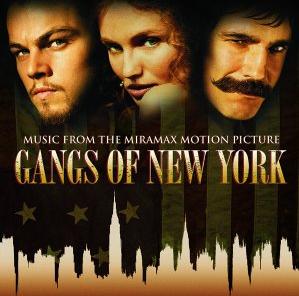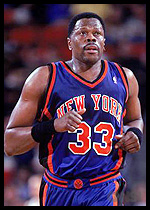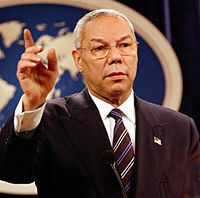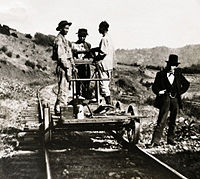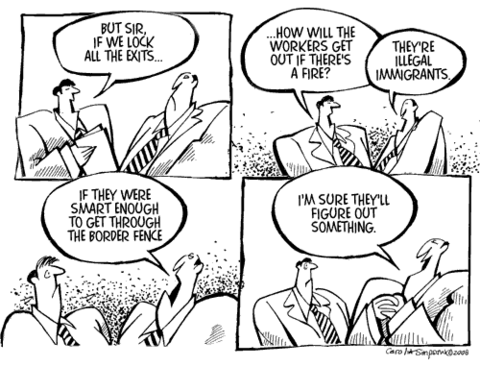Racism
From The Peopling of New York City

| ||||||||
|---|---|---|---|---|---|---|---|---|

| 
| 
| 
| 
| ||||
Contents |
The Evolution of Racism in New York
Chink, guinea, dago and nigger are, today, enough to stop polite conversation in it’s tracks, so it is hard to imagine that at the turn of the last century these words were commonly found, and that educated men, men of science as well as politicians, supported their demeaning connotations. Today Jews and Italians are classified as white without a second thought, yet one does not have to look far into the past to find the days when they were viewed as inferior races and discriminated against the just the same, if not more, than many of today’s immigrants (Foner143). Seeing the radical change in social perceptions and racial discrimination that have taken place one has to wonder how today’s immigrants will be seen fifty years from now.
-
The Evolution of America's black-white "cleavage"
How do we classify race in New York? Most would agree that the overarching “category” of race is between balck and white. This black-white cleavage, however, was not always so. In fact, it has evolved from much earlier times of immigration and movement. Nancy Foner in "From JFK to Ellis Island" marks the main distinction between pre-WWII and post-1965 immigrants. In the early 20th century, most immigrants were “white” or at least had light skin color. They consisted of Southern and Eastern Europeans such as Italian and Jews. At that time, Jews and Italians were considered to be “dark,” swarthy and with oily skin. In 1924, legislation supported by “restrictionists” ended the large influx of Eastern and Southern Europeans. Over time, Jews and Italians assimilated into white America. However, at the time there was outright racism in private clubs, elite schools, housing and employment that was later experienced by blacks as well. Contrastingly, after World War I and through the 1960s, immigrants were mostly black and the post-WWII immigrants were Puerto Ricans and other dark skinned immigrants. After the major influx of blacks to the North, distinctions between whites (Europeans and Anglo-Saxons) have become subtler and this has created a “black-white cleavage.” The main distinction of race has become the difference between blacks and whites. Osofsky supports this idea. In “Alienation: New York and the Negro,” Osofsky shows how the increasing numbers of Blacks in New York caused a more distinct black and white cleavage. Certainly, blacks faced hindrances on their voting rights, Jim Crow laws, and other forms of segregation. Osofsky explains that racism faced by Blacks wasn’t too harsh when the Blacks first migrated to the North. Blacks faced embarrassing vaudeville and minstrel shows that made fun of the black race by imitating stereotypical values and characteristics. Blacks were viewed as being lazy, incompetent, sensuous and unfaithful, and dumb. However, the popular views of blacks differed and were often contradictory. For example, social reformers of the mid-1800s discouraged Black and Irish amalgamation in the Five Points area of Manhattan, and often displayed this largely as a problem of the lower classes. Here we see an interesting play between class and race. Many of these reformists and writers, such as Charles Dickens, "laid the blame for amalgation and the degredation of the city at the feet of blacks alone" (Harris 255). In contrast, some reformers thought that "amalgamation reinforced the degeneracy of the Irish," and even, that "amalgamation with the Irish threated blacks' attempts to achieve moral equity" (Harris 248). Dickens described the Five Points as full of prostitution, drinking, alcohol and vice, while at the same time he greatly admired the amazing dance and music of the black community that went on in the evening parties in the bars of the Five Points. Through Dickens’ description, we see that already, blacks became a sort of “Other” of the white American; in other words, blacks represented something unwanted and dangerous while at the same time tempting the white American into a desirable state of being, a good time. And their role as the Other of white America has been steady. As New York faced a great influx of blacks from the South after the Civil War, racism became a lot more harsh and destructive. Blacks faced increasing alienation. For example, white churches that had previously allowed smaller numbers of blacks to worship, now forced blacks to create their own churches. Also, the Irish who had at one point been referred to as “white niggers” and were hated by the white population, had after this time, essentially “joined” the ranks of the whites in New York and participated in riots based on race. The biggest riot in the Tenderloin area in Manhattan demonstrated that the once regular clashes (during the Draft riots) between Blacks and Irish and turned into clashes between the generally black and the generally white population. This evolving of blacks as the Other of white America is certainly not as simple as population change; in fact, it is quite complex. However, we can determine that the black-white cleavage in America that has been embedded in institutional racism, has been a sort of claim on “resources,” whether money, prestige, or education. The only thing that is undoubtable is that racism’s harsh effects must be reversed and removed from contemporary Amercan society. -JK
Racism in the Jamaican and West Indian communities
Racism has come up several times as being one of the major topics of discussion within the Peopling of New York City. With New York being such a culturally diverse area, the existence of racism has become inevitable. However, the existence of racism is not the essential point when discussing this topic. Moreover, it is the underlying factors that cause racism, most notably human nature.
In order to illustrate this point, our professor conducted a demonstration. It was called the “Stereotype game.” We each took out a blank piece of paper and our professor would call out the names of particular ethnic groups. After each group we would write the first thing that came into our minds. After naming 15 or so different groups he collected our papers. He then proceeded to announce each ethnic group and read each of our words that we associated with that group. Many of our responses were strikingly similar. Besides being hysterically funny, several important points came out of this exercise.
First, whatever information we have been exposed to by our society, we take that information and associate it with that group. For example, there were numerous responses that Jews are cheap, Italians are loud, and blacks are poor.
But there were other groups that we really didn’t know much about and many of our responses were similar. Swedes being white was one of these responses. This is particularly significant because it shows that human beings generalize based on physical characteristics. This is especially true when analyzing blacks and Hispanics within our population. If someone appears black, we assume they are African American. If someone appears brown we classify them as “hispanic.”
The Jamaican immigrants are a quintessential example of this point. Even though they are not African Americans, society as a whole considers them to be blacks. Unfortunately, people do not recognize their ethnicity, and they must deal with racism just as if they were black. In reality, West Indian society is different from African American society. In their society race is deemphasized and achievement is stressed through education. In addition, black people are viewed as “normal”, because in the West Indies black people held extremely high positions, and black people were homeless. No weight was put on skin color to determine your place in society. Through the Jamaicans immigrating to New York City, we can see how the nature of racism is manifested within our society.
Racism Quiz : Which of the following famous people are African-Americans???
(Answers at the bottom of the page)
Racism in Chinatown
The notion of “yellow peril” and discrimination against Asians were prompted with the influx of Asian immigrants into the United Sates in the nineteenth century. The Chinese dominated the Asian immigrant group, settling on the Wet Coast where there was a high demand for cheap labor for mining gold and constructing the transcontinental railroad. With the completion of the transcontinental railroad, a large number of white workers migrated westward and had to compete with Chinese immigrants for jobs. When employers preferred to hire the Chinese immigrants at low wages, the notion of “yellow peril” arose among the whites. As a result, the Chinese immigrants became the targets of racial slurs, abuse, and mob violence. Provisions of immigration laws also demonstrated racial prejudice. In 1882, Chinese Exclusion Act was passed, prohibiting all immigration of Chinese. The Chinese became “the first and the only group to be excluded from the United Sates on the basis of race, ethnicity, or nationality (Foner 161).” The Act expanded and influenced other Asian groups as well by 1917. Other laws were also passed, prohibiting intermarriage between Asians and whites and barring Asians from owning land (Foner 161).
The song, “Chinatown, my Chinatown,” written by William Jerome and Jean Schwartz in 1910, contains stereotypical references and racial slurs:
|
When the town is fast asleep, |
Strangers taking in the sights, |
Chinatown, my Chinatown |
</font>
Asian immigrants of today, however, no longer constitute the yellow peril; they have become the model minority. High academic achievements of the second generation of Asian immigrants have promoted Asian group’s position within the racial hierarchy. For instance, the Uptown Chinese, or the Taiwanese from elite classes, have acquired professional jobs after finishing their master’s or Ph. D. degrees in American universities (Kwong 61). There is also a large group of Asian immigrants who enter America with college degrees from their home countries. The result of such academic advancements is the so-called “whitening effect,” which have made Asians “rank just below whites in the city’s racial hierarchy (Foner 161).” The “whitening effect” is apparent in their residential pattern, as they are the least residentially segregated from the white population (Foner 161). The increasing acceptance towards Asians, however, is not produced only by their educational success. Rather, their lighter skin color also has been an important factor. For instance, West Indian immigrants, still face significant racial discrimination while they place tremendous emphasis on educational achievements. Their effort to be recognized for educational success has generally been denied as they still struggle with their racial label as “black.” The difference between Asian and West Indian groups shows that skin color, rather than individual achievements, still plays an important role. Even though not white, lighter-skinned Asians are granted more advantages over other darker-skinned groups.- An article from The New York Times (May 1990) on black consumers' complaints about Korean Grocers:
- Black Customers, Korean Grocers: Need and Mistrust
Upon acquiring a more favorable position within the racial hierarchy, most Asians today see themselves as superior to blacks and Hispanics. Such attitudes toward blacks and Hispanics seem irrational, considering Asians themselves have experienced racism. Rather than fighting for racial equality together, non-white racial groups have turned against one another. For example, there have been instances of the black communities boycotting Korean stores, complaining that Korean storeowners treat them like potential thieves (Foner 164). Racial issues seem to linger on because groups, who have been the targets of racism, also start to exploit the benefits or advantages granted as soon as their racial status improve. While these benefits may be short-term and limited, such fact seems to be ignored easily.
Racism among Hispanic Immigrants
Many new darker skinned immigrants try to focus on their nationality in order to avoid being labeled African American and having to suffer the perceived negative connotations that accompany that. Accustomed to the culture and social structure of their native country they are unaccustomed to the challenge the negative connotations that being black presents in America. When faced with racial discrimination in The Unites States, that prevents them from obtaining adequate jobs or that steers them to black neighborhoods, many immigrants conclude it is due not to their heritage, but to their association with African Americans, as a result of their skin color. Thus they try to distance themselves from African Americans, feeling superior to them and believing that in this way they might avoid discrimination, while at the same time finding themselves united with them by that very discrimination(Foner, New Immigrants 19). While these observations accurately describe the problems West Indian's face when arriving in the United States, incoming Hispanic immigrants face similar hassles. Unfortunately New Yorkers are predominantly unaware of differences among Spanish speaking immigrants and are because of that unable to differentiate between their nationalities. Many find themselves mistakenly identified as Puerto Ricans. Brazilians, for example, who are phenotypically white and come from the well-educated middle class of Brazilian society, find it offensive to be grouped with the city’s Latino population. Dominicans on the other hand find it very difficult to be confused with African Americans, as the society they come from categorizes only the disdained Haitians as black and where the one drop rule seems to function in reverse, where one drop of white blood means not black. Due to these factors dark skinned Hispanics seem to oftentimes face just as much racial discrimination as African Americans.
Racism on the Streets of Harlem
Racism Quiz Answers:
1. Barack Obama - His father was born in Kenya, his mother is American. He does consider himself to be African American.
2. Tiger Woods - In actuality, Woods is one-fourth black, one-fourth Thai, one-fourth Chinese, one-eighth dutch and one-eighth American Indian. However, he was quoted on "The Oprah Winfrey Show" as being "Cablinasian". A term he made up to describe his background as a mix of Caucasian, Black, Indian and Asian.
3. Patrick Ewing - Born in Jamaica, so he is Jamaican-American.
4. Colin Powell - Born in America but both of his parents are Jamaican. He is a Jamaican-American.
Bibliography
- Foner, Nancy. From Ellis Island to JFK. New York: Yale UP, 2000.
- Foner, Nancy. New Immigrants in New York. New York: Columbia UP, 2001.
- Kwong, Peter. The New China Town. New York: Farrar, Straus and Giroux, 1996.
- Osofsky, Gilbert. Harlem: THe Making of a Ghetto. Chicago: Harper and Rowe, 1971.
- Harris, Leslie M. "The Rulers of the Five Points": Blacks, Irish Immigrants,and Amalgamation." In the Shadow of Slavery: African Americans in New York City, 1626-1863.

